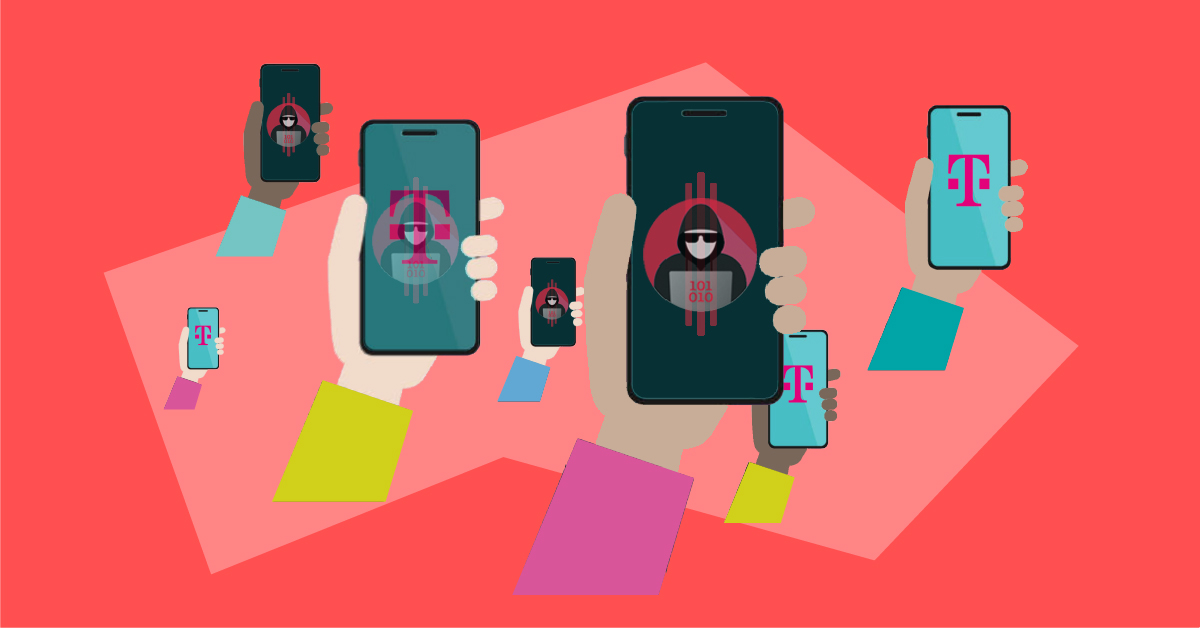

Around August 14, 2021, news started to trickle out that T-Mobile, the second-largest wireless carrier in the USA, had suffered a data breach. Over the next two weeks, some startling data points about the scope and scale of the breach would emerge, including:
In a shocking interview on August 27, 2021, for the Wall Street Journal, a 21-year-old American named John Binns, who currently lives in Turkey, identified himself as the primary mover behind this data breach. His summary of his exploit is stark and scary. The WSJ story headline quotes him as saying, “Their security is awful.” In total, the personal details of over 50 million individuals were stolen.
Mr. Binns told the WSJ he made his way into the T-Mobile IT infrastructure by scanning their public networks and finding an unprotected router in July. He had been performing routine reconnaissance of their networks and gained access to a data center in western Washington state. The breach was originally uncovered in mid-August when a US company found its account information for sale on the Dark Web, and various reports indicate that the entire trove of records was up for sale for 6 bitcoins (worth over US$275K as this story is written).
In follow-up interviews with Motherboard and Bleeping Computer, Mr. Binns disclosed further details of his attack. To Bleeping Computer (a well-known, UK-based computer security news and information site), he said he obtained ingress into T-Mobile’s systems and networks through its “production, staging, and development servers.” To Motherboard, he asserted that he grabbed PII from the T-Mobile servers before the company could eject him from inside their security perimeter. Before that happened, he obtained copies of PII for over 50 million current, former, and prospective T-Mobile customers. Bleeping Computer reported that Binns said he hacked into an Oracle database containing data for “approximately 100 million T-Mobile customers.”
T-Mobile’s networks and servers offered access to information well beyond most hackers’ expectations. Mr. Binns expressed himself surprised by finding himself able to explore “more than 100 of the company’s servers” (source: ZDNet). One important takeaway from this exploit is the importance of hiring — and acting upon — Red Team exercises, wherein trained penetration experts try all their tricks and wiles to break into company networks and assets, then report on their findings away from public scrutiny (and possible data breaches). It’s far better to have paid experts find unauthorized ingress points and close them before external attackers can find and exploit them, as was the case with this T-Mobile breach.
Another surprising outcome was the disclosure of PII from former customers, some from as far back as 2004, and prospective customers. The WSJ story quotes Glenn Gerstell, former general counsel for the NSA, as saying that T-Mobile did not implement “good data management practices.” Certainly, it makes sense to purge old customer records when records age past applicable record retention laws or licensure regulation retention requirements. This seldom exceeds 7 years in any jurisdiction and often expires in 3 years. Thus, the theft of records dating back to 2004 in 2021 shows a long-overdue age-out, and the purge should have happened a decade ago — or longer — for the oldest records involved.
Security and networking professionals understand the principle of least privilege (PLP) quite well. Mr. Binns’s ability to access production, staging, and development servers speaks to overly permissive access controls open to those with network access. T-Mobile might have been less open to attack had its data center been subject to a rigorous application of PLP principles and practices, long considered a cornerstone of cybersecurity.
Then, data protection tools and technology could have played a vital role in protecting T-Mobile from unauthorized access to — and exfiltration of — its customer data. A properly implemented set of data protection tools would have noticed out-of-the-ordinary access attempts into its databases and reported them immediately to security staff. Likewise, such tools would block data from crossing the network boundary without presenting additional credentials or proofs of identity and demonstrating a valid need for that data to be exported (and then only in authorized, encrypted formats).
The company has acknowledged its responsibility for the breach and has engaged cybersecurity firm Mandiant and consulting firm KPMG to conduct a thorough and complete investigation. T-Mobile has created a web page to report its activities and progress in dealing with the aftermath. CEO Mike Sievert also blogged on this event on August 27, acknowledging that the company “failed to prevent this exposure…” He continued that they plan “to take our security efforts to the next level as we work to rebuild trust,” and he disclosed what the company has learned about the incident. To start remediation, T-Mobile is offering:
This remains an ongoing investigation whose scope and scale have yet to be completely determined. For companies and organizations outside this merciless spotlight, it’s a reminder that implementing and enforcing best security practices is far less expensive and damaging than attempting to cure such a breach after the fact.


